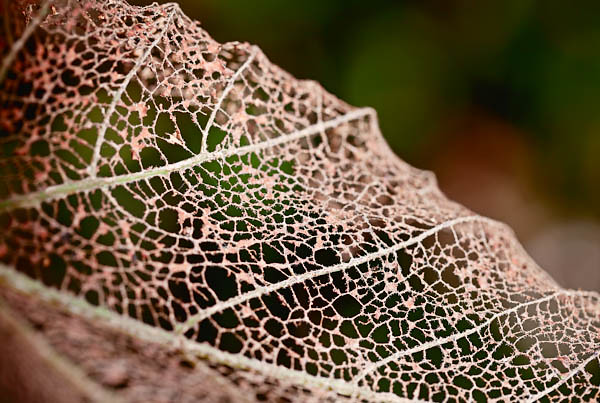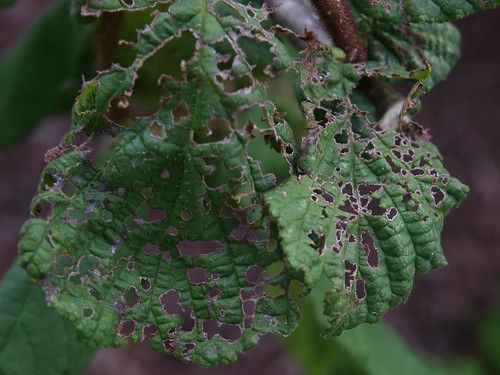The entire universe is concentrated in a garden. ~ Sobin Yamada
The leaf may look lacy and rather pretty, but the source of the damage to this leaf–and millions more like it–is neither lacy nor pretty. The culprit is the Japanese beetle. The beetles eat the soft material between the veins which gives the leaves a lacy effect.
Since first found in the United States in New Jersey in 1916, it has slowly migrated south and west, arriving in northern Illinois and Wisconsin 10-15 years ago. The beetle is found in every state east of the Mississippi except for Florida, and is capable of damaging a variety of vegetation including crops, weeds, and dozens of species of ornamental trees.
The Japanese beetle — not my friend! Whenever I see a beetle in my garden, I pick it off the plants and drop it into a pot of soapy water. It only partially helps, but at least I feel like I am doing something to protect my garden without resorting to potent sprays and poisons.
—————-
Bo Mackison is a photographer and the owner of Seeded Earth Studio LLC. She passionately dislikes any and all insects that cause damage to gardens and trees.









